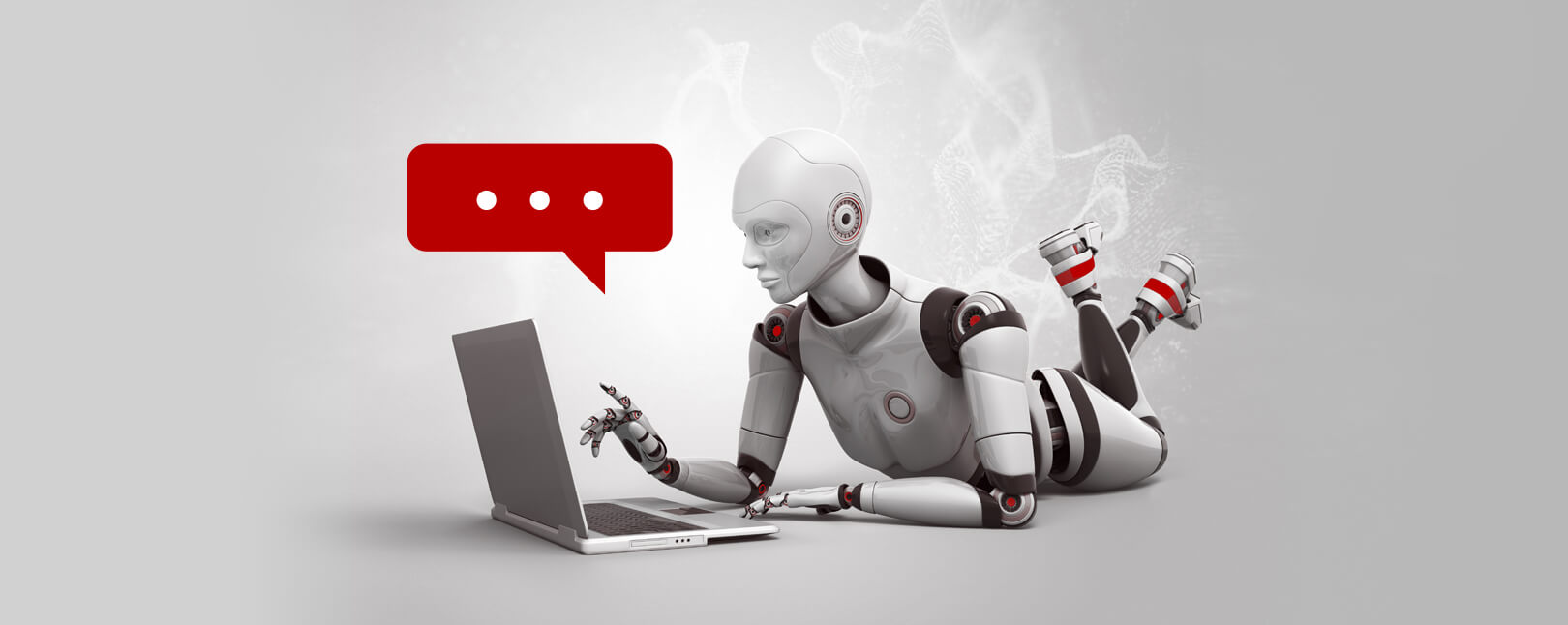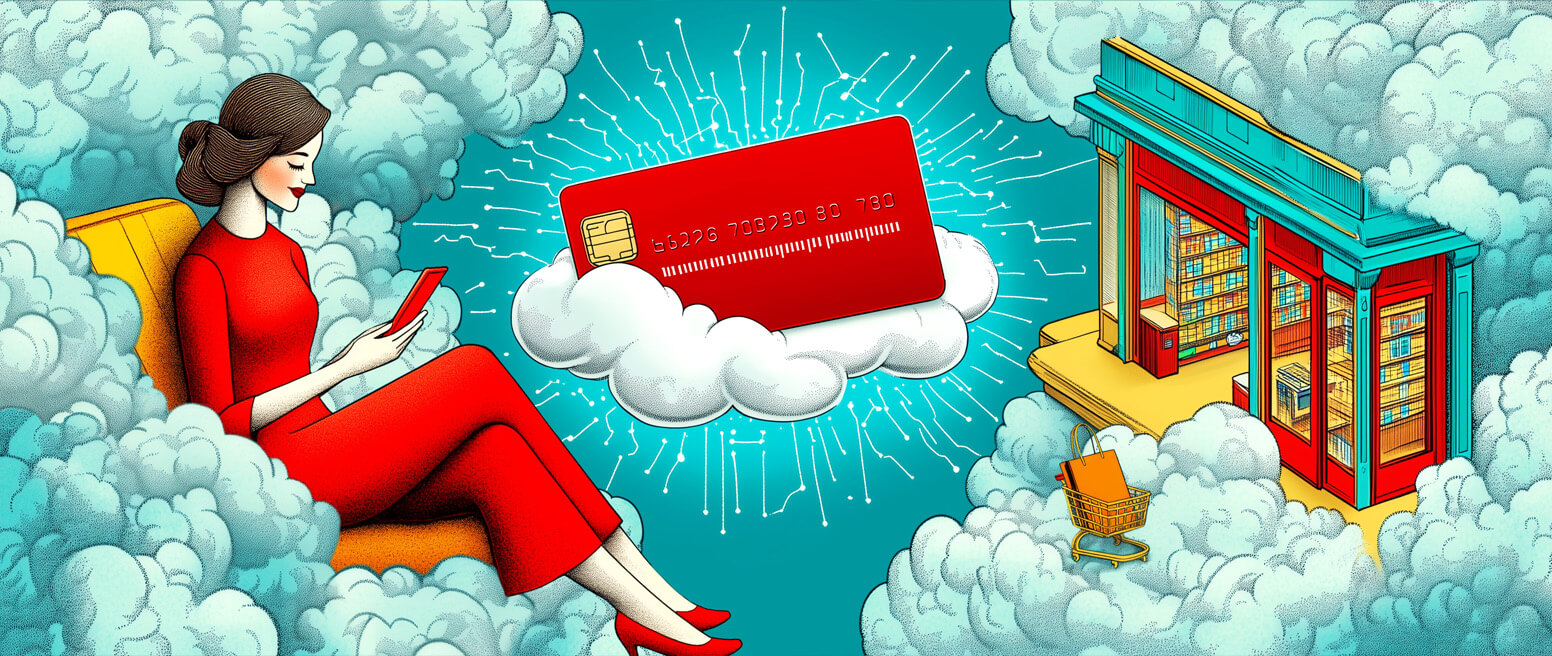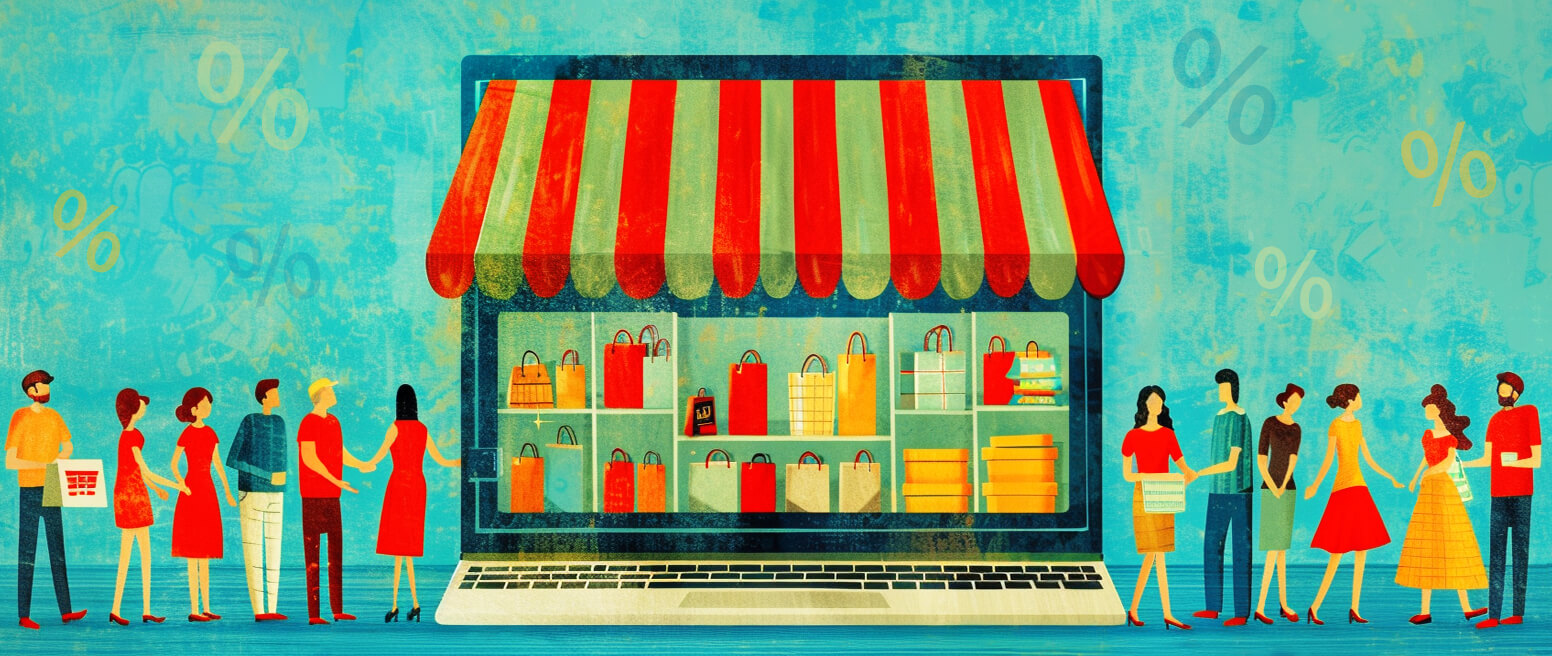Chatbots Can Improve Customer Service & Prevent Chargebacks
As a merchant, your customer service department is one of the most crucial factors in your success. No matter what your industry or offerings, customer service agents are the main communication channel between you and your customers.
The larger the business grows, however, the harder support management becomes. Automating a portion of your communications could be the solution. This is where customer service chatbots can come into play.
Chatbots can streamline and improve the customer experience. But, can removing the personal element have a negative impact on your bottom line over the long haul?
In this post, we explain what chatbots are, how they work, and some of the benefits and risks associated with automating your customer service. We’ll list some of the best chatbot providers, and help you decide if a chatbot program is right for your business.
Recommended reading
- Analyzing Consumer Buying Behavior in 11 Different Verticals - Chargebacks911
- Top 15 Customer Returns Reasons in 2025 & How to Avoid Them
- Online Shopping vs In-Store Shopping: the Future of Retail?
- They’re Here — Cyber Week 2024 Stats & Analysis!
- Card-Not-Present Transactions: Know the Risks & Rewards
- What is a Return Customer Rate? How to Calculate Your RCR
What is a Customer Service Chatbot?
- Customer Service Chatbot
A customer service chatbot is a conversational interface that interacts with customers to resolve issues and answer simple questions. It uses rudimentary AI and “yes/no” programmatic decisioning to streamline customer interactions and resolve customers’ questions.
[noun]/kəs • tə • mər • sər • vəs • CHat • bät/In essence, a chatbot is a script that performs basic communicative tasks. Primarily used for customer service and support, chatbots streamline interactions between consumers and merchants. They are often the first interaction a customer has with your business, answering simple inquiries or guiding callers to the proper human agent.
Many retailers also employ bot technology to engage with customers through social media and direct messaging apps like Facebook Messenger, Kik, and WhatsApp. Experts say that, thanks to chatbots, as many as 85% of all customer service interactions are already being managed without human employees.
Chatbots save time for both customers and merchants, providing quick and efficient service that is cheaper than live agents. There are pros and cons to their use, though, and you need to weigh those carefully.

What Do Chatbots Do?
Support chatbots can be fully automated, or they can function as a tool for live agents. Simple automated systems are often rules-based, whereas more complex systems leverage artificial intelligence to resolve user queries.
Rules-based Chatbots
Rules-based chatbot apps are pre-programmed with a limited range of yes-or-no question options. An algorithm determines the bot’s response during a conversation. While easier to implement, automated chatbots typically lack any human-like behavior.
AI Chatbots
Artificial intelligence-based chatbots can recognize sentence structure, resolve open-ended queries, and understand the language of the user. They provide appropriate answers by comparing questions to available data, giving interactions an overall more human feel. AI chatbots also learn from each encounter, fine-tuning performance by analyzing correct and incorrect responses.
Live Chatbots
So-called “live” chatbots work alongside your customer support team, routing communications and connecting contacts to the agent with the right skills and knowledge, all in real time. By asking simple questions, bots can also provide the agent details such as the caller's name, their current wait time, and the nature of their issue.
How Popular Are Chatbots?
While chatbots have not completely replaced human support agents, it’s safe to say that their usage will continue to climb in the future. Roughly 42% of B2C companies use a chatbot on their site. Research shows that 15% of people have communicated with a business through a chatbot, and as many as 40% of millennials say they interact with bots on a daily basis.
An estimated 33% of consumers want to be able to use a chatbot in certain scenarios, such as making a hotel or restaurant reservation. And, when it comes to actually making a purchase, nearly half would be open to making a purchase directly from a chatbot.
Users are also clear about their reasoning: convenience and accessibility. Survey respondents claim that, for the online services they use, having 24/7 access to customer support is the greatest benefit offered by chatbots.
Direct Benefits of Customer Support Chatbots
It’s not surprising that chatbot usage is on the rise. The direct benefits are substantial for both customers and merchants:
Customer Service Chatbots Deliver Secondhand Benefits
The immediate impacts of customer service chatbots are self-evident. However, the long-term benefits are equally important in preserving and enhancing merchant profitability.
Individuals satisfied with today’s support experience are more likely to shop with you again in the future. Plus, while chatbots help your customers, they can also collect valuable data.
Information about sales preferences and common questions can help you develop target marketing based on individual shoppers’ needs. This type of personalized service can help build customer loyalty for life.
Bots can handle many of the repetitive, frequently asked questions that don’t require human decisioning, letting you reallocate staff to where they’re needed more. Advanced chatbots can even offer feedback surveys and record customer interactions for training and development.
Finally, streamlined customer service practices can significantly decrease customer disputes (also known as chargebacks). This is achieved by cultivating goodwill between the customer and the merchant, and providing rapid response to inquiries that might otherwise have devolved into disputes.
It’s crucial to note, however, that this is only true when chatbots are properly deployed. Otherwise, chatbots may have the opposite effect. A bad chatbot experience could result in greater customer frustration and thereby increase your chargebacks, as we’ll see in the next section.
Are There Downsides to Using Chatbots?
Only if deployed ineffectively.
Over-reliance on any single technology or solution can be problematic, and chatbots are no exception. Customer service chatbots still require close supervision and human oversight. AI technology continues to improve every year, but chatbots you can trust with full, genuine autonomy are still many years away.
Other potential downsides or limitations to using chatbots include:
Chatbots are powerful tools overall. But, without monitoring by human agents, they can lead to trouble. They may even prove to be a security liability.
Are Chatbots Secure?
It’s not pleasant to talk about, but the truth is that no system is entirely hacker-proof.
Technology of any sort can be exploited. With chatbots, however, many of these weak links are simply the result of merchant carelessness. A breach could occur because:
- The chatbot references an insecure host, database, or third-party software.
- Chatbot communications lack proper encryption, particularly when accessing personal data.
- Agents and other employees do not receive enough training, resulting in accidental exposure.
- New or evolved threats are ignored or are not properly assessed.
Any of these issues can potentially be used to attack your systems, your data, or even your entire network. Data can be stolen, corrupted, or used to commit ID theft or criminal fraud.
Viruses, malware, and ransomware can take over entire systems, exposing data or holding it hostage. Hackers may even use your chatbots to sneak malware or other troublesome software onto your customers’ devices. If that happens, your company will likely take the blame.

Chatbots & Human Oversight: An Ideal Combination
Customers want access to live, effective, human-based customer service at every stage of their interaction. If you wish to integrate chatbots into your support strategy, the technology should be balanced by human oversight. Best practices for this include:
Security procedures
Internal security strategies should include standard procedures for authorizing users, adding or amending data, and responding to emergency situations.
Strong encryption
Ensure that all communications feature end-to-end encryption so that data is exposed only to the sender and the receiver.
Cautionary messages
Even with strong encryption, it’s better to not send personally identifiable information (such as account numbers) over chat. Remind users of this and offer more secure communication channels for that data.
Access management
Grant employees access only to the portals, dashboards, or data they need to do their jobs. Mandate proper training for all individuals before they’re allowed to use the system.
Remember: automation is there to simplify and streamline customer interactions. If chatbots open vulnerabilities, they are counter-productive.
Do I Need a Chatbot System?
Like all technology, chatbots are made to augment your existing system… not replace it.
You’ll need a good customer support strategy already in place. As we discussed above, chatbot responses depend on accessing existing data. AI-based chatbots analyze interactions to fine-tune their knowledge base over time, but they need a good core of data to start.
Beyond that, there are a few other things to consider when deciding if your company would benefit from a chatbot feature:
If any of that sounds like your business, you should definitely look into the possibilities of chatbot technology.
The Best Customer Service Chatbots for 2023
The success of your chatbot strategy depends on partnering with the right provider. There are many different bot software platforms… far more than we could cover in even a ten-part series.
Some specialize in customer service chatbots, while others offer bots as one part of a wider customer support package. Still others focus on only one type of product, such as AI bots. Major brands such as HubSpot, WordPress, and Salesforce have chatbots developed to work specifically (but not exclusively) with their own products.
When looking for the best customer service chatbot, here are things to consider:
- Your business type
- Chatbot type (AI, Voice-based, etc.)
- Ability to integrate with your existing software/hardware/platform
- Turnkey vs. DIY model
- Cost
With all that in mind, there are platforms that are generally recognized as being powerful and reliable. A list of the most popular service providers (in alphabetical order) includes:
Botsify
An AI- and machine learning-based platform, Botsify enables users with no coding skills to build chatbots for live chat, video chat, group messaging, social media integration, and more. The platform supports over 190 languages, making it ideal for global retailers.
Botsify works across multiple channels and is compatible with Facebook Messenger, Shopify, Slack, etc. It offers a unique chatbot designed for instructors and students.
Pros:
- Omni-channel; integrates with multiple platforms
- Ready-to-use templates, including ones for the education industry
- Economical pricing
Cons:
- Bot-to-human handoff is cumbersome
- No built-in chatbot analytics
- Older technology is slow and static compared to competitors
Chatfuel
Chatfuel combines simple editing tools and customizable templates to help create powerful chatbots. Multi-purpose bots can perform a variety of tasks, from answering questions to collecting emails and contact information, all without prior knowledge of coding or programming.
A comparatively low-cost platform, Chatfuel users can create their own conversational rules, perform analytics, and reduce customer service efforts by being available to interact with customers 24/7.
Pros:
- Can shift into different conversation paths for a more “human” experience
- Chatbot interactions analyzed in real-time
- Economical pricing
Cons:
- Generic templates may require extensive customization
- Limited capabilities in the free version
- Older technology is slow and static compared to competitors
Freshchat
Freshchat’s AI-driven chatbot solution is ideal for both small business and enterprise clients, allowing teams to assist customers through multi-product support, a knowledge base, a self-service portal, and more.
Getting started is fast, with ready-to-use templates for different use-cases. Conversations can be easily and seamlessly switched to live agents with a single click. Freshchat works across multiple channels, including web, mobile, WhatsApp, and Messenger.
Pros:
- Omnichannel options
- Offer intent-based answers and follow-ups
- Customizable web and mobile apps
Cons:
- Only works with other Freshworks business systems
- Limited number of integrations
- Quality assurance issues and minor bugs have been reported
ManyChat
ManyChat makes it simple to have interactive, tailored conversations and deliver instant support through Instagram Direct Messages and Facebook Messenger. Set-up is intuitive, with drag-and-drop features that enable bots to be built in minutes.
ManyChat connects with business applications such as Shopify, MailChimp, and HubSpot, and offers content broadcasting to Facebook subscribers. A/B split testing is supported; scalable price plans and a free option are available.
Pros:
- Easy installation; friendly user experience
- Multiple tutorials and ready-to-use templates
- Ability to broadcast to Facebook subscribers via Messenger
Cons:
- Works only with Facebook Messenger
- Analytics are underpowered
- Quality assurance issues and minor bugs have been reported
Pandorabots
Pandorabots is one of the oldest and most popular chat-hosting services worldwide, largely due to its multilingual capabilities. Through voice-enabled functionality, customers can speak to the chatbot and have their conversation converted to text in the chatbot widget in real time.
Pandorabots offers great flexibility as a full turnkey chatbot development solution. That said, programming requires a high level of coding expertise.
Pros:
- Real-time, multi-language, speech-to-text conversion
- Functionon Twitter, Telegram, and Slack, plus web and mobile
- Cost-effective pricing
Cons:
- Conversions are not flawless; answers are sometimes incorrect
- Requires coding expertise
- Limited features available in the free version
ProProfs Chat
ProProfs Chat delivers hassle-free integration with native tools like a knowledge base and help desk. It simplifies the automation of incoming support requests and helps support teams resolve customer care issues.
Through multiple-choice and open-response questions, the tool can identify the user’s need and quickly route them to relevant knowledge base articles or FAQs. Dynamic reporting also analyzes bot performance on a per-store basis.
Pros:
- Can quickly answer routine questions or create help desk tickets
- In-depth reporting on chatbot performance
- Requires no coding skills to create/edit templates
Cons:
- Limited selection of templates
- Lack of integration to social media platforms
- No mobile app
Tidio
Tidio is a customer service platform that integrates live chat and chatbots, enabling you to connect Messenger, Instagram, live chat, and email. With both desktop and mobile applications, you can respond to messages on the move from any device. You can also manage all of your communication channels in one spot.
The platform easily integrates with other websites and platforms like WordPress, Shopify, Wix, BigCommerce, and more.
Pros:
- Very user-friendly, with a free trial option
- Combines live chat, messenger, and email interactions on on a single page
- Highly customizable
Cons:
- Cannot manage client chats via Whatsapp, Instagram, or Twitter
- Pricing is higher than other solutions
- Users cannot manage multiple chats simultaneously
Wotnot
Ideal for absolute beginners, WotNot’s no-code chatbot builder allows users to create a new bot in just a few hours. The program is flexible and easy to use, and comes with access to a library of curated templates and utility tools.
With Wotnot, users can manage multiple chatbots across different channels. Bots from apps and web pages are accessed in one location for easier use.
Pros:
- Intuitive web chat interface with industry-specific templates
- Mobile app for remote communication
- Highly customizable
Cons:
- Limited to Facebook, web, and WhatsApp
- Bot builder, while easy to use, occasionally runs slow
- Limited options for native integrations
Love them or hate them, chatbots have almost become a necessity for modern customer service providers.
Whether it’s answering simple questions, routing calls to live agents, or interacting with customers through social media, customer support, chatbots are here to stay. If deployed properly, a customer service chatbot will save time, improve your customer experience, and go a long way toward keeping your business sustainable.
FAQs
What is a customer service chatbot?
A customer service chatbot is a conversational interface that interacts with customers to resolve issues and answer simple questions. It uses rudimentary AI and “yes/no” programmatic decisioning to streamline customer interactions and resolve customers’ questions.
Are chatbots effective for customer service?
Yes. Chatbots can successfully answer up to 80% of routine questions. Costs are far lower, service is faster, and users are generally more satisfied with their customer service experience.
Which is the best chatbot?
It totally depends on the needs of the business. Some chatbots are better at answering routine questions, while others use AI to interact with customers. Some bots have extensive translation capabilities, and many have built in templates. Chatbots may require professional coding but many are designed for simple, DIY implementation.
What are the disadvantages of chatbots?
Disadvantages to chatbots include their inability to resolve all queries correctly, their inability to adapt responses to emotional customers, and the fact that they are not suitable for all businesses. Costs may be prohibitive for more complex bots, and security issues may arise if the program is not implemented properly.
What are the security risks of chatbots?
Chatbot security risks can be broken into two categories. Onone hand, we have external threats, like spoofing or impersonation, data tampering, data theft, etc. On the other hand, we have vulnerabilities due to the system not being well-maintained, lack of encryption and other protections, or human misuse/errors.














